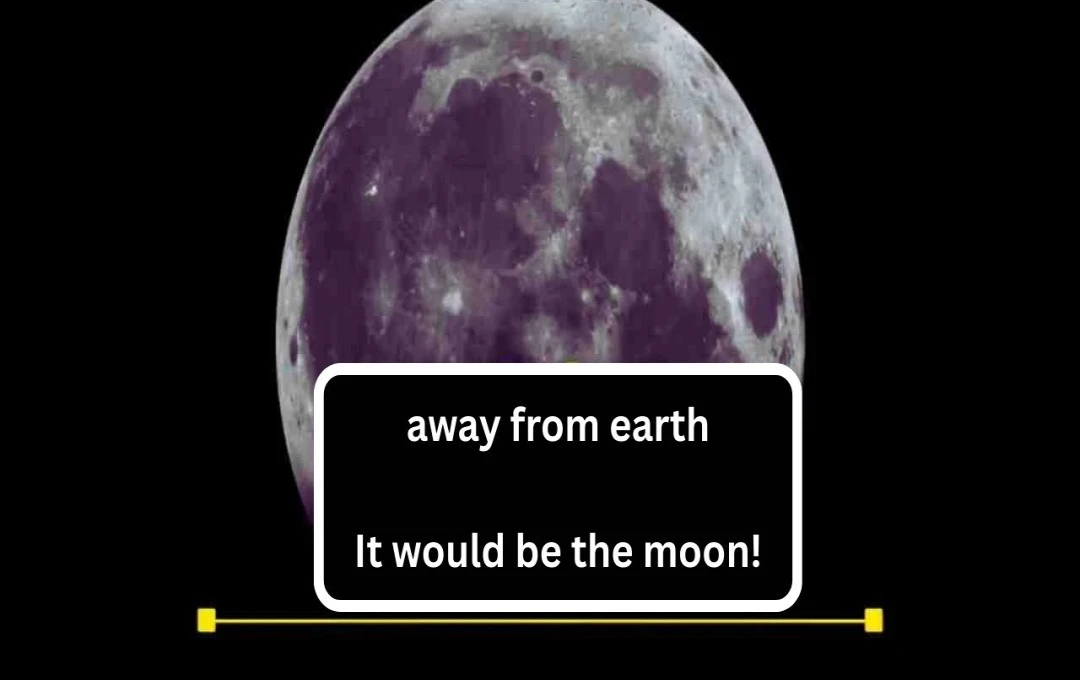Our closest celestial companion, the Moon, is gradually drifting away from Earth. Recent research reveals that the Moon is moving away from us at a rate of approximately 1.5 inches (3.8 centimeters) per year. This process is incredibly slow, but its implications are far-reaching.
New Delhi: Earth's most steadfast celestial companion, the Moon, which has been with us for about 4.5 billion years, is now slowly moving away from us. Researchers at Michigan State University have brought this significant fact to light. According to Dr. Stephen Dickerson, an expert in physics and astronomy, the Moon is receding from Earth at a rate of about 1.5 inches (3.8 centimeters) per year. Consequently, Earth's rotational speed is also gradually decreasing, which could lead to longer days in the future.
Moon: A 4.5 Billion-Year-Old Companion
The Moon was born approximately 4.5 billion years ago. It is believed that at that time, a Mars-sized protoplanet collided with the young Earth, scattering a vast amount of debris into space. The Moon was formed from this very debris. In its early stages, the Moon was very close to Earth and appeared much larger in the sky than it does today.
Geological and paleontological evidence suggests that Earth's days were shorter millions of years ago. For instance, about 700 million years ago, at the end of the dinosaur era, a day lasted only about 23.5 hours.
Why is the Distance Increasing?

According to Dr. Stephen Dickerson, a physicist and astronomer at Michigan State University, the primary reason for this is tidal forces.
- The Moon's gravitational pull creates two tidal bulges in the oceans.
- One bulge is directed towards the Moon, while the other forms on the opposite side.
- Due to Earth's rotational speed, these bulges are not perfectly aligned with the Moon but are slightly ahead.
- This drag increases the Moon's orbital speed, causing its orbit to gradually expand.
- As a result, the Moon is drifting away from Earth year after year.
How Do Scientists Measure It?
Measuring the Moon's distance is a complex process. During the Apollo missions, astronauts placed mirrors (reflectors) on the lunar surface. Scientists direct laser beams from Earth towards these mirrors. By measuring the time it takes for the laser to return, they can precisely track the Moon's distance and any changes in it. This technique has revealed that the Moon is moving about 1.5 inches further away from us each year.
Why Are Days Getting Longer?
As Earth transfers some of its angular momentum to the Moon through these tidal bulges, Earth itself loses a bit of its angular momentum. This impacts its rotational speed, causing it to gradually slow down. This means that as the Moon moves further away:
- The length of a day on Earth will increase.
- Initially, seconds will be added, then minutes, and eventually, hours will be the difference.
However, scientists state that this process is incredibly slow. Even today, the Moon's distance is approximately 384,000 kilometers, and the annual increase is only about 0.00000001 percent. Therefore, for millions of years to come, 24-hour days, solar eclipses, and tides will continue to occur normally.















